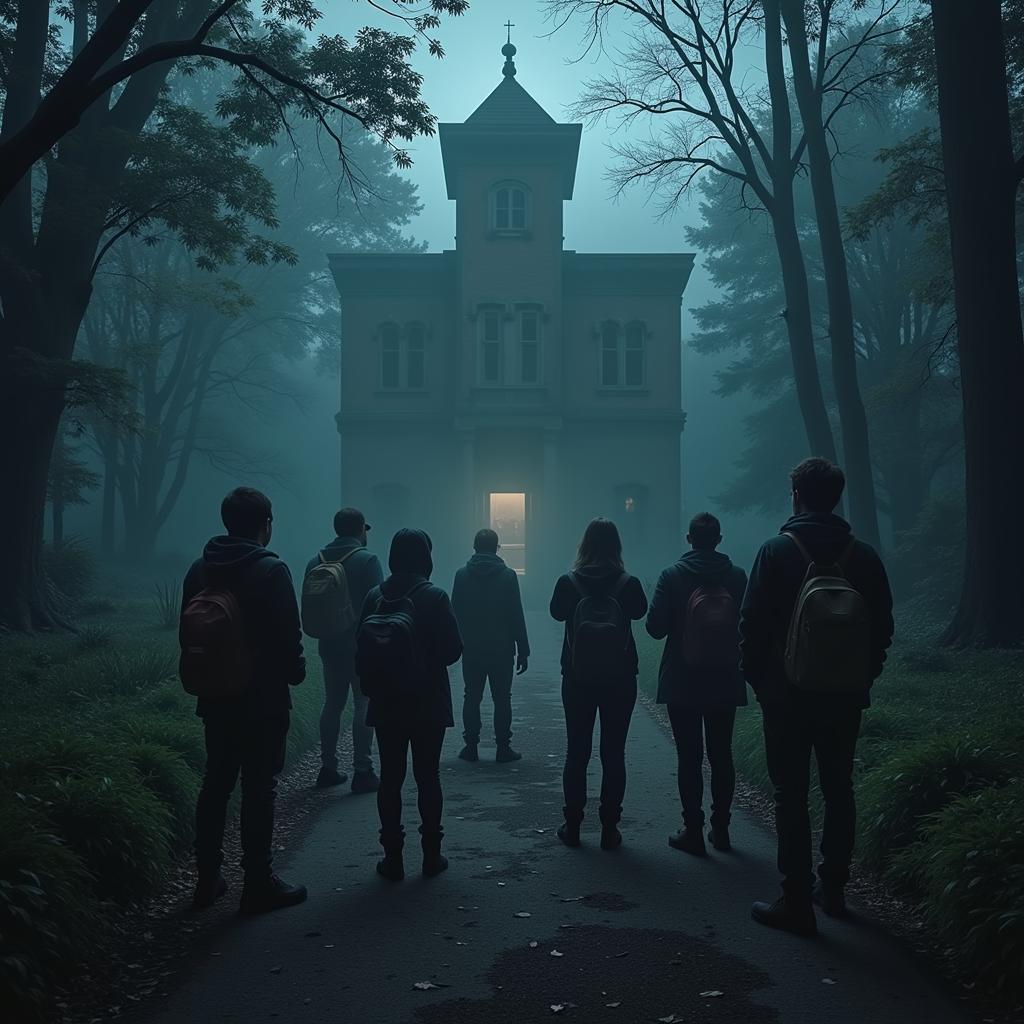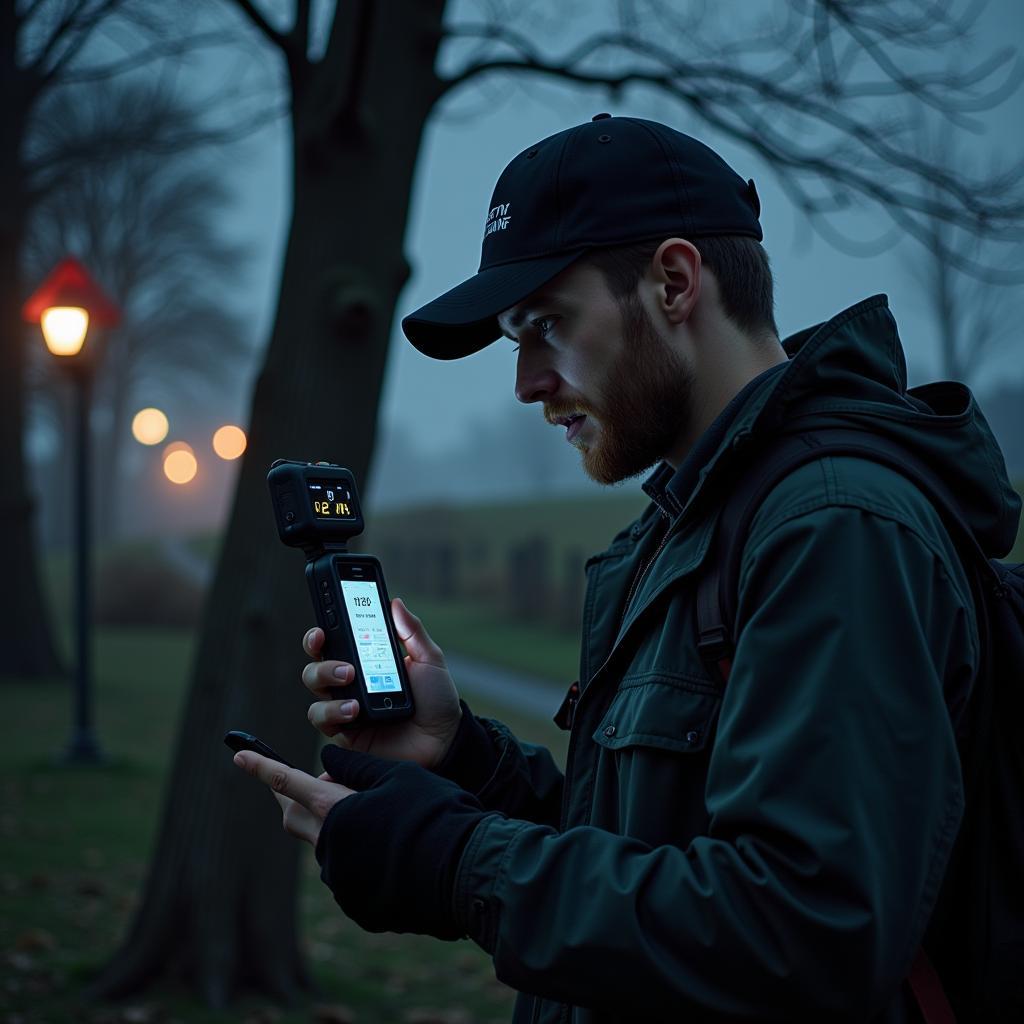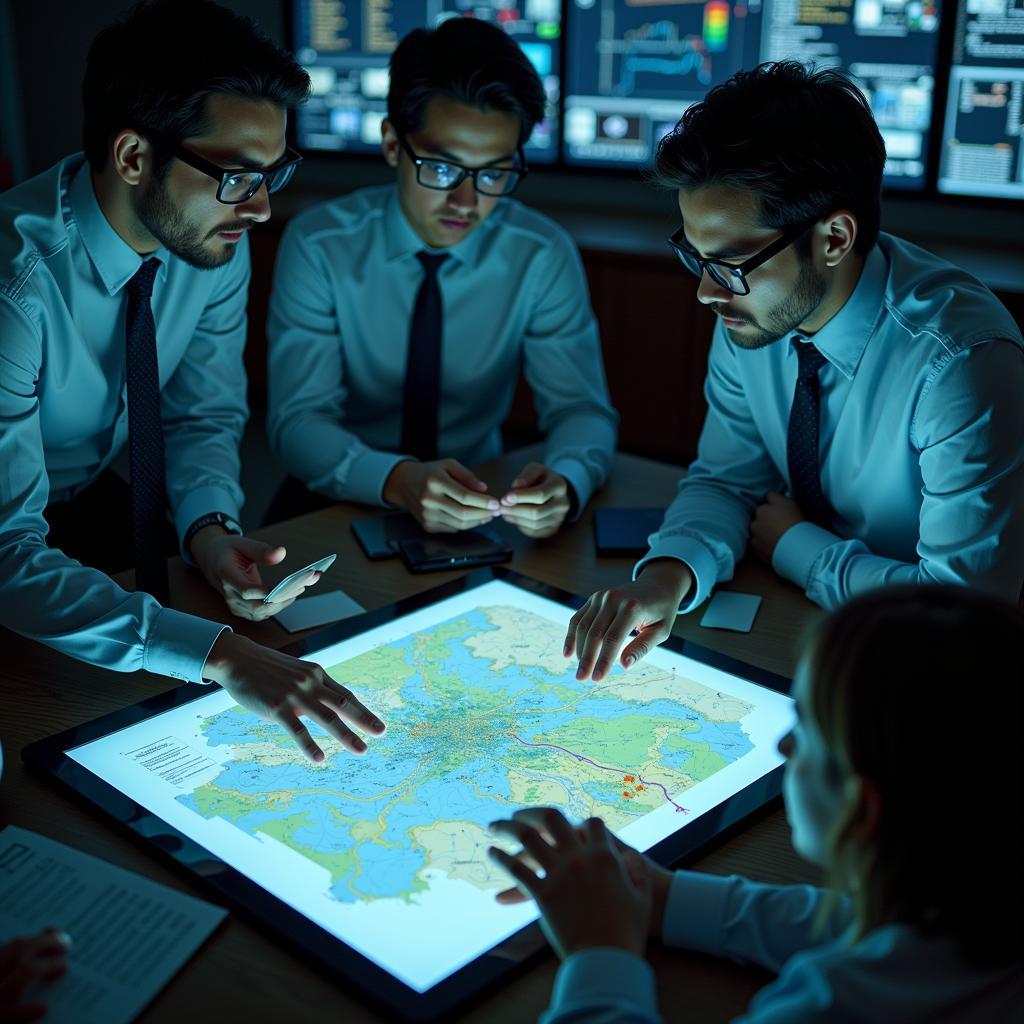The convergence of technology and the paranormal has always been a source of immense fascination. From EVP recordings to spirit photography, the pursuit of evidence for the supernatural has often gone hand in hand with technological advancements. But few phenomena have captured the public imagination quite like Pokemon Go, the augmented reality game that swept the globe in 2016. While initially perceived as a harmless form of entertainment, a growing number of researchers within the paranormal community are beginning to see Pokemon Go as something more significant – a potential catalyst for a new wave of paranormal discovery.
 Pokemon Go players gathering at a haunted location
Pokemon Go players gathering at a haunted location
Could Pokemon Go Be a Gateway to the Unexplained?
At first glance, the idea of a mobile game unlocking the secrets of the paranormal might seem far-fetched. After all, Pokemon Go is, at its core, a game designed for entertainment. However, the mechanics of the game, coupled with its massive global reach, have inadvertently created a unique and powerful tool for paranormal investigation.
One of the key features of Pokemon Go is its use of geolocation technology. The game requires players to physically move around their environment in order to find and capture Pokemon, which are often located at points of interest such as parks, landmarks, and even cemeteries. This has led some researchers to believe that the algorithms used to determine Pokemon spawn points may be inadvertently tapping into a hidden layer of reality, one that is sensitive to fluctuations in electromagnetic fields or other paranormal phenomena.
Unexplained Phenomena and Pokemon Go Hotspots: More Than Just Coincidence?
Anecdotal evidence seems to support this theory. There have been numerous reports from Pokemon Go players around the world of experiencing strange occurrences while playing the game. These range from encountering unexplained noises and apparitions to experiencing sudden and dramatic shifts in emotional energy. While some of these accounts can be attributed to coincidence or overactive imaginations, others have left even seasoned paranormal investigators baffled.
 Paranormal investigator using an EMF reader near a Pokestop
Paranormal investigator using an EMF reader near a Pokestop
For example, there have been several documented cases of Pokemon Go players reporting increased feelings of dread and anxiety in areas known for their tragic pasts, such as battlefields or sites of natural disasters. Conversely, players have also reported feelings of peace and tranquility in locations considered to be sacred or spiritually significant. While traditional paranormal investigation methods often rely on specialized equipment and controlled environments, Pokemon Go has inadvertently created a global network of unwitting paranormal sensors, capable of detecting and reporting anomalous activity in real-time.
Go Fest 2024 Research Dawn of a New Discovery: A New Frontier in Paranormal Research
This unprecedented level of data collection has not gone unnoticed by the paranormal research community. Organizations like the Paranormal Research Society have begun to incorporate Pokemon Go data into their investigations, using player reports and game mechanics to identify potential hotspots of paranormal activity. This new approach to paranormal research, dubbed “augmented reality investigation,” is still in its infancy, but the possibilities are tantalizing.
 Researchers analyzing Pokemon Go data and paranormal reports
Researchers analyzing Pokemon Go data and paranormal reports
Imagine a future where paranormal investigators can use augmented reality overlays to visualize electromagnetic fields, thermal readings, and even historical data on top of the real world, all while simultaneously tracking the movements of millions of Pokemon Go players. This could potentially allow us to identify patterns and correlations between paranormal activity and environmental factors that were previously impossible to detect.
Conclusion: Embracing the Unknown
The dawn of Pokemon Go has ushered in a new era of discovery, not just for gamers, but for paranormal enthusiasts and researchers alike. While the game itself may not be inherently paranormal, its impact on the way we interact with our environment and the vast amount of data it generates have opened up exciting new avenues for exploring the unexplained. As we venture further into this uncharted territory, one thing is certain: the future of Paranormal Research is about to get a whole lot more interesting.